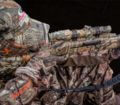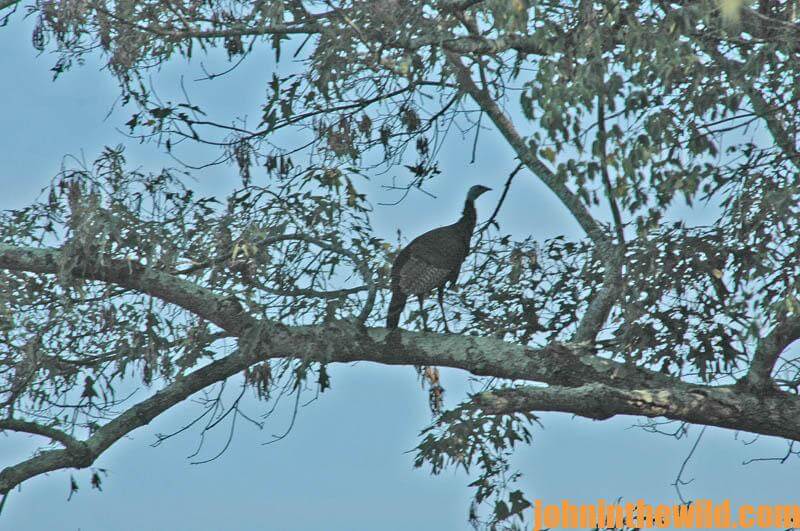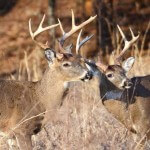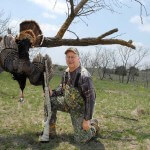Editor’s Note: Avid turkey hunter Steve Coon, a police officer from Arnold, Missouri, has been a longtime member of Mark and Terry Drury’s Drury Outdoors (www.druryoutdoors.com).
 One of the toughest turkeys to try to take is a gobbler with hens, because when you’re calling to that gobbler, you’re trying to compete for his attention with hens that he can see that are all around him. That’s why I rely heavily on my decoys. One of the toughest henned-up gobblers I ever tried to take was a bird my friends and I named the “Tree Keeper.”
One of the toughest turkeys to try to take is a gobbler with hens, because when you’re calling to that gobbler, you’re trying to compete for his attention with hens that he can see that are all around him. That’s why I rely heavily on my decoys. One of the toughest henned-up gobblers I ever tried to take was a bird my friends and I named the “Tree Keeper.”
We had been hunting this turkey for a week, but we couldn’t get him to come to us. Each morning the Tree Keeper was roosted in a big tree out in the middle of an open field. When the time came to fly off the limb, he’d fly down, strut and drum right under that tree. He’d wait for the hens to come to him. He could see the hens coming from a long way off. So, he didn’t have to go to a hen. If no hens came to him, he’d turn, walk away from the tree and go into the woods. If you called to him, this ole bird was so smart that he knew that you knew where he was. If you didn’t go to him like a hen would, he’d know that you were a hunter and not a turkey. The Tree Keeper was one of those gobblers that could drive a turkey hunter nuts.
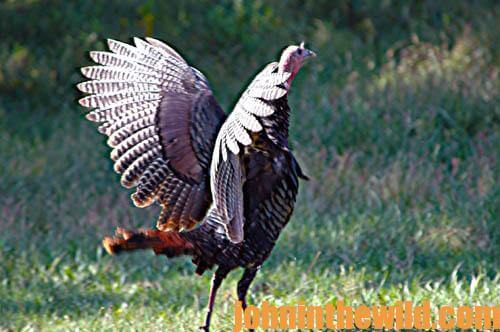 So, after a week of trying every tactic we knew, we decided the only way we could take that gobbler was to get out in the field early before daylight and just sit down in the grass. We got close enough, so that I felt sure that when the gobbler pitched out of the tree and his feet hit the ground, I could take the shot.
So, after a week of trying every tactic we knew, we decided the only way we could take that gobbler was to get out in the field early before daylight and just sit down in the grass. We got close enough, so that I felt sure that when the gobbler pitched out of the tree and his feet hit the ground, I could take the shot.
When you have to try to take a turkey in an open field, you have to rely heavily on your camouflage. We didn’t have anything to hide behind and no type of back cover. But we knew this was the only way we might have a chance of taking this gobbler. Even if we spooked him, we would get him away from that tree and maybe have a chance to harvest him in the woods – but that’s not what happened. As soon as daylight came, and that gobbler pitched off the limb, when his feet hit the ground, we introduced him to lead. The turkey had 1-1/4-inch spurs and a 10-1/2-inch beard.
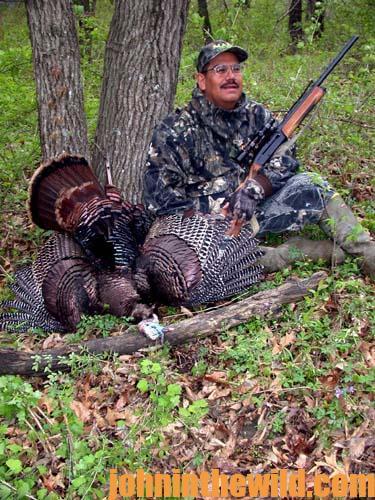 We all like to call to turkeys. We like to hear turkeys gobble back to us and come to us. But when you find a bird like the Tree Keeper, you often have to use extreme measures to take him. That ole bird was so vocal and had been hunted by so many hunters that he knew every mistake a hunter would make. He knew that if he couldn’t see the hen calling to him and coming to his tree, then more than likely, those hen calls were being made by a turkey hunter.
We all like to call to turkeys. We like to hear turkeys gobble back to us and come to us. But when you find a bird like the Tree Keeper, you often have to use extreme measures to take him. That ole bird was so vocal and had been hunted by so many hunters that he knew every mistake a hunter would make. He knew that if he couldn’t see the hen calling to him and coming to his tree, then more than likely, those hen calls were being made by a turkey hunter.
When you find a bad bird like that, you’ve got to decide if you want to take that bird, or if you want to call to him. If you call to him, you’re probably not going to take him. When that bird pitches out of the tree, you have to get in close enough, so you can take him. When you know a gobbler can see you from the limb he’s roosting on, you’d better make sure that you can sit as still as possible for a long time, and that your camouflage makes you invisible. If there ever was a test of the effectiveness of Mossy Oak camouflage (www.mossyoak.com), the Tree Keeper Tom put Mossy Oak to the test, and Mossy Oak passed with flying colors.
To learn more about turkey hunting, check out John E. Phillips’ print, Audible and Kindle turkey books at https://johninthewild.com/books/#turkey. For a free copy of John E. Phillips’ “The Turkey Gobbler Getter Manual,” go to https://johninthewild.com/free-books/.


